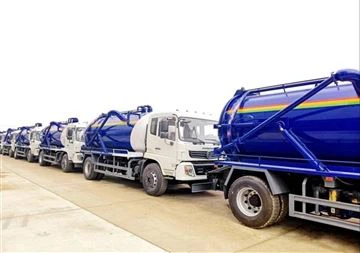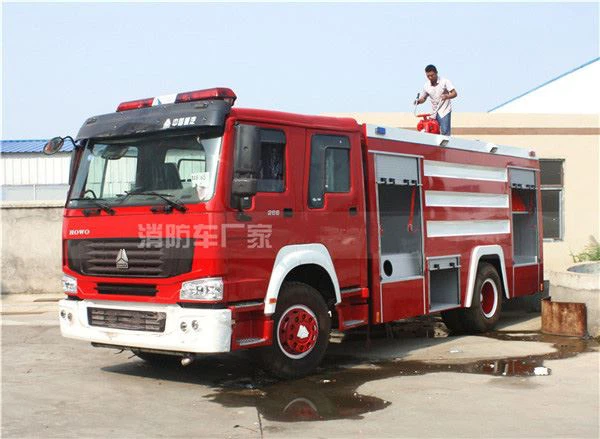Understanding the Size and Functionality of Big Garbage Trucks

Garbage trucks play an integral role in waste management and environmental sustainability. Among the various types of waste collection vehicles, the big garbage truck stands out due to its capacity, functionality, and design. In this article, we will explore the various aspects of big garbage trucks, their importance, their design, operational efficiency, and the impact they have on our daily lives.
The Role of Big Garbage Trucks in Waste Management
Big garbage trucks are primarily responsible for collecting waste from residential, commercial, and industrial areas. Their large capacity allows them to carry substantial amounts of waste, making them essential for efficient waste management in urban settings.
Types of Waste Collected
Big garbage trucks can handle various types of waste, including:

- Residential Waste: Household trash, recyclables, and organic waste.
- Commercial Waste: Waste from businesses, offices, and retail stores.
- Construction Debris: Materials left from building projects, including wood, metal, and concrete.
Benefits of Using Big Garbage Trucks
Utilizing big garbage trucks comes with several benefits:
- Efficiency: Their large size means fewer trips are needed to dispose of waste.
- Cost-Effectiveness: Collecting more waste per trip reduces labor and fuel costs.
- Environmental Impact: Improved collection rates lead to better waste management and recycling practices.
Design and Specifications of Big Garbage Trucks
The design of big garbage trucks is tailored to accommodate the specific needs of waste collection. Here are some key specifications:
Dimensions and Capacity
| Type | Length (ft) | Width (ft) | Height (ft) | Capacity (cubic yards) |
|---|---|---|---|---|
| Standard Front-load | 20 | 8 | 10 | 6-8 |
| Rear-load | 25 | 8 | 11 | 10-12 |
| Side-load | 24 | 8 | 10 | 8-10 |
Types of Garbage Trucks
Big garbage trucks come in different types, each serving a specific function:
- Front-Loader: Used for commercial waste with front-loading capabilities.
- Rear-Loader: Equipped with a rear-loading system, effective for residential waste.
- Side-Loader: Uses a hydraulic arm to pick up bins, allowing for one-person operation.
Specialized Vehicles
Beyond the standard models, there are specialized big garbage trucks:
- Compactor Trucks: Compress waste to maximize space.
- Recycling Trucks: Designed specifically for transporting recyclables.
- Suction Trucks: Used for liquid waste and sludge management.
Operational Efficiency of Big Garbage Trucks
Operational efficiency in waste collection can significantly enhance a city’s waste management efforts. Here are some important factors:
Route Optimization
By implementing advanced routing software, operators can minimize fuel consumption and time taken to complete rounds:
- GPS Tracking: Allows real-time tracking of vehicles and efficient routing.
- Data Analysis: Monitoring collection patterns can lead to smarter operational decisions.
Collection Frequency and Scheduling
Understanding collection needs can help schedule pickups efficiently:
- Regular Schedule: Normal residential pickups on specific days of the week.
- On-Demand Services: Providing more flexibility in commercial waste collection.
Environmental Impact of Big Garbage Trucks
Big garbage trucks directly impact the environment through various aspects of their operation.
Fuel Efficiency and Emissions
Advancements in technology are leading to more fuel-efficient garbage trucks, reducing greenhouse gas emissions:
- Alternative Fuels: Many new trucks operate on compressed natural gas (CNG) or electricity.
- Regular Maintenance: Proper upkeep of engines ensures optimal fuel usage and lower emissions.
Recycling Impact
Big garbage trucks are integral to promoting recycling efforts:
- Convenient Collection: Organizing separate bins for recyclables encourages responsible waste disposal.
- Increased Awareness: Regular collection of recyclables fosters community engagement in sustainable practices.
Real-Life Examples of Big Garbage Truck Operations
Many cities have implemented effective waste management programs utilizing big garbage trucks. Here are a few examples:
Los Angeles, California
LA’s Sanitation Department employs environmentally friendly tankers and CNG trucks, reducing emissions significantly. They conduct services both residentially and commercially in a well-staffed operation.
Tokyo, Japan
Tokyo has adopted automated side-loading garbage trucks, improving collection efficiency and reducing labor costs while covering large urban areas efficiently.
Challenges in Big Garbage Truck Operations

While there are many benefits to utilizing big garbage trucks, several challenges exist:
Cost of Maintenance
The initial investment and regular maintenance can be high. Cities often have to budget for:
- Labor Costs: Hiring specialized personnel for truck operation.
- Repairs and Parts: Keeping vehicles in working condition requires additional costs.
- Fuel Costs: Operating large trucks can result in high fuel expenditures.
Regulatory Compliance
Cities must also navigate a variety of regulations regarding emissions standards and waste management practices. Staying compliant can be a significant challenge, especially in urban areas.
Future Trends in Big Garbage Truck Technology
Technological advancements are paving the way for smarter and more efficient big garbage trucks:
Automation and Smart Technologies
The future of garbage trucks may involve more automation:
- Robotic Systems: Automating the pickup process could reduce labor costs and increase efficiency.
- Smart Sensors: Trucks may be equipped with sensors to monitor load weight and optimize routes.
Electrification of Garbage Trucks
Electric garbage trucks are emerging in various cities, substantially lowering emissions and operational costs:
- Charging Stations: As electric fleets increase, the need for robust infrastructure will also grow.
- Battery Technology: Improved battery technologies will enhance operational range and capacity.
FAQ Section
What is the typical size of a big garbage truck?
A big garbage truck can typically measure between 20 to 30 feet in length and has a capacity of between 6 to 12 cubic yards depending on the type.
How often are big garbage trucks used for collection?

This varies by location and type of waste but typically ranges from daily to weekly for residential areas, while commercial areas may require more frequent pickups.
What types of waste can big garbage trucks collect?
Big garbage trucks can collect residential waste, commercial waste, recyclable materials, and construction debris.
How do big garbage trucks impact the environment?
Big garbage trucks can have both positive and negative impacts, including lowering emissions with advanced fuels and promoting recycling, but they also have a significant carbon footprint if not operated efficiently.
Are big garbage trucks automated?
Some big garbage trucks are now equipped with automation, such as self-operating arms and advanced routing systems, which can enhance efficiency.
What are the maintenance requirements for big garbage trucks?
Maintenance for these trucks includes regular engine checks, brake inspections, tire replacements, and compliance checks with environmental regulations.
